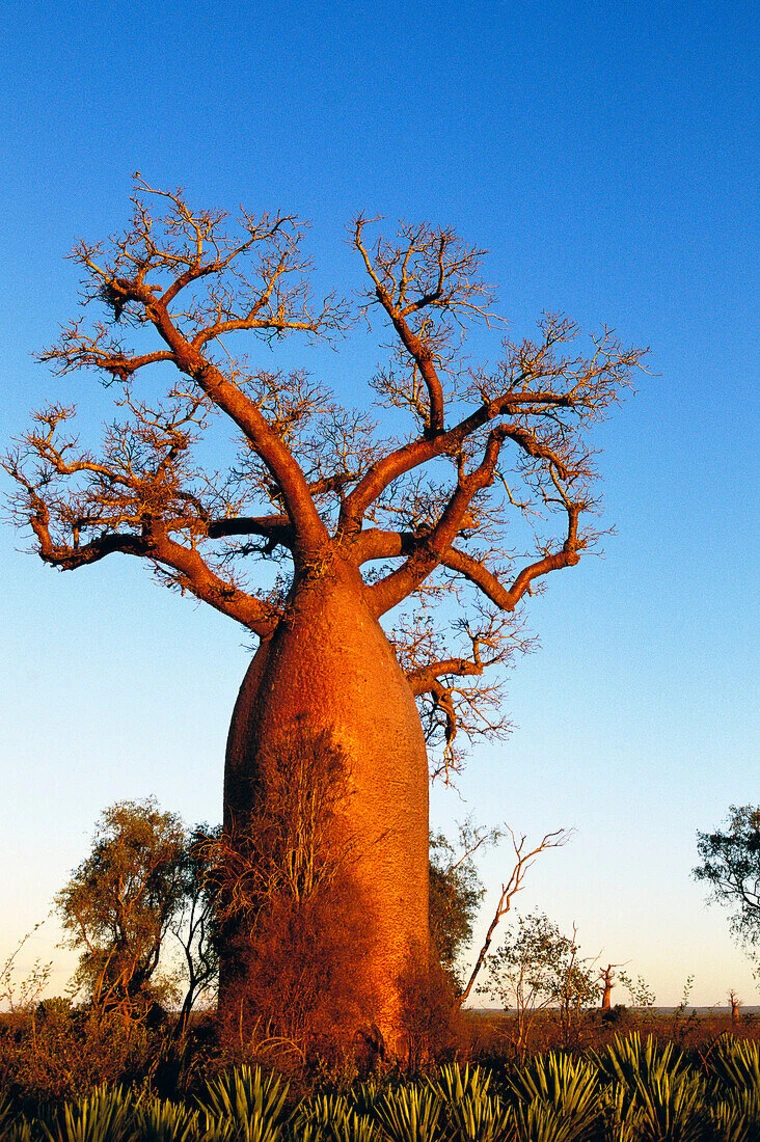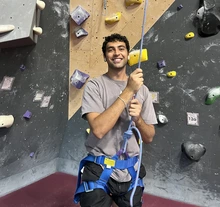jeh·nr·aa·suh·tree
Giving Trees: Gifts From The Forest
This tour aims to increase appreciation for the ways plants and people are interdependent and to deepen understanding of the specific ecosystem services trees provide which sustain both the earth and its people.
Begin this self-guided tour by locating the courtyard of the ENR2 Building. Locate the ENR2 Building using the Campus Map.
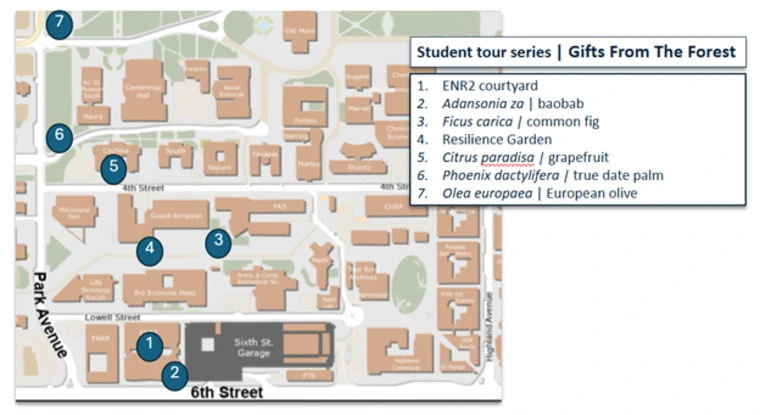
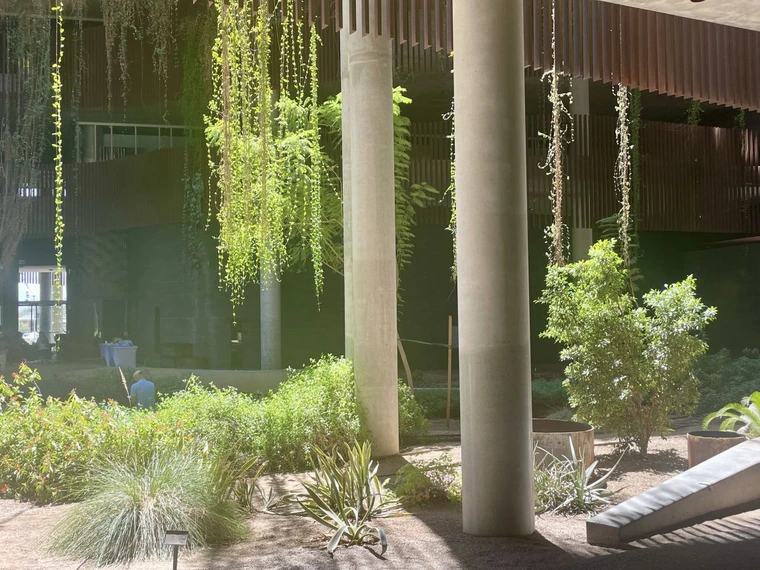
This is the Environmental and Natural Resource2 building, often referred to simply as the ENR2. Constructed in 2025, the building and associated green spaces have earned dozens of regional, national and international awards. You will immediately notice how much different this building is when compared to other campus buildings constructed in the 20th century. This building was built so that it forms a kind of slot canyon, typical in desert areas across the American southwest. In this space, we can see examples of interconnections of plants, people and environments through the use of biophilic design.
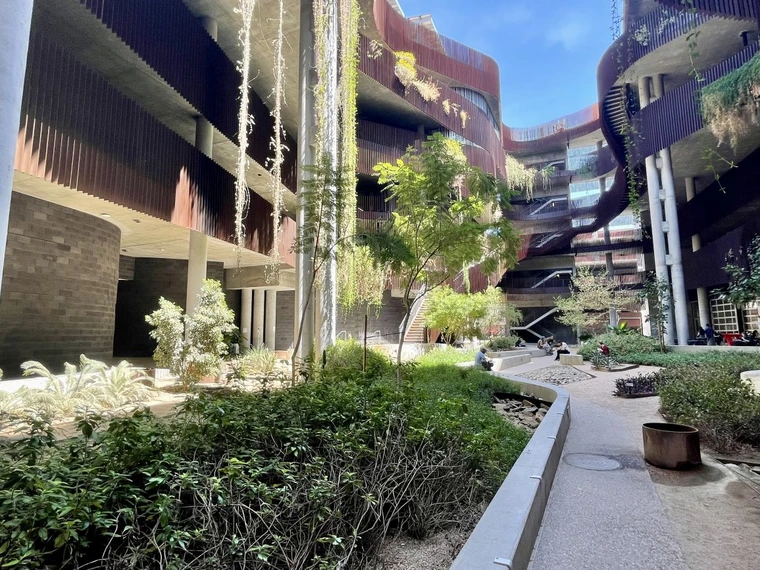
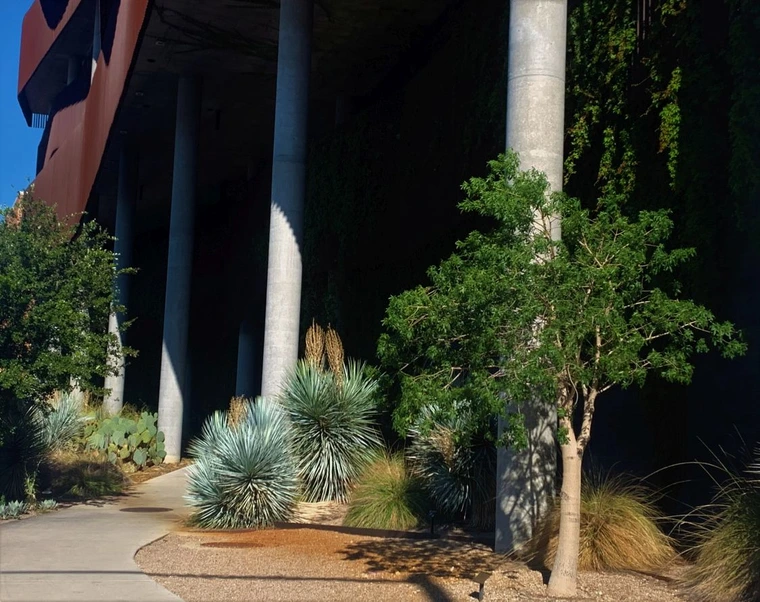
One of the special inhabitants of the ENR2 landscape is the Baobab. While this tree is now small and somewhat unassuming, in 50 years, when it reaches maturity, you won't even recognize it. These fascinating trees can grow up to 30 meters (100 ft) tall, and their caudiciform trunks fatten up to 2 meters (6 ft) in diameter. These ancient trees originated in Madagascar over 21 million years ago and can live to be up to 3000 years old. Some of these trees can live so long and grow so massive that they are hollowed out and used as storefronts or homes. At maturity, the tree’s massive size accommodates tremendous storage of water and nutrients. This tree is considered a pillar of the communities where it originates. In fact, it is referred to as the Tree of Life for many reasons. First, the baobab is a keystone species throughout Africa. This means it is a species that is so integral to the ecosystem that its disappearance would change the ecosystem drastically. In the Sonoran desert, saguaro are similar keystone species. Imagine if every saguaro just disappeared - how much would the desert change? As one example, we can imagine that the animals, and insects that rely on the saguaro for food and shelter would lose their support and result in a loss of pollinators many other plants in the ecosystem depend on. Such is true for the monkeys, winged fruit bats, elephants, people and other plants that depend on the baobab. Keystone species like baobab and saguaro are sometimes referred to as “Mother Trees” as these species are often the oldest and largest trees in a particular ecosystem, and a source of support for other living things within the system. This tiny tree has a long way to go before it reaches the heights of its ancestral mother trees, but even now, at its adorable size, it does so much for us. Using a tool that calculates the savings cost of plants, this small baobab will save up to $1000 from 2025 to 2045 in air pollution removal, uptake of atmospheric carbon dioxide, reduced stormwater infrastructure and much more. Think about how much more it will do if allowed to thrive!
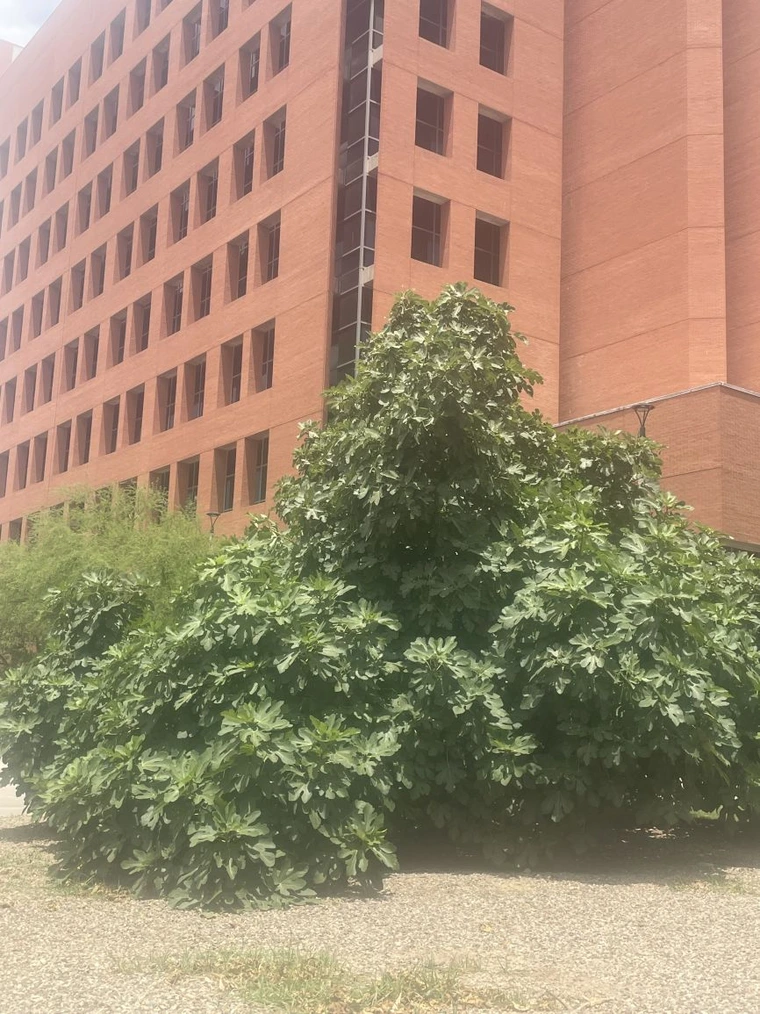
On the south side of the Physics and Atmospheric Sciences building, we can see a wonderful, sprawling fig tree. It has low spreading branches and huge palm shaped leaves, and a dense and shaded canopy. They can grow up to 10 meters (30 ft) tall with a similar canopy spread. This particular tree was awarded as a “Magnificent” tree by the Arizona Department of Forestry and Fire Management in 2024 for being among the largest in the state. This species is native to western Asia but is well adapted to Tucson’s climate. The fig tree fruits twice a year, and if you have seen a fig before, you would know they are quite an odd fruit. The fig fruit, is actually an inside-out flower structure formed from an enlarged hollow receptacle that develops hundreds of tiny florets (modified flowers) on the inside. In addition to delicious fruit and dense canopy shade, this fig tree provides much more. Fig leaves are used to treat high cholesterol and diabetes, and the sap is often said to treat skin conditions such as tumors or warts. Additionally, figs trees are very resilient in bouncing back after disturbance - often being one of the first trees to grow back in deforested or burned areas. They take advantage of the nutrient-rich soil and lack of competitors and spring up quickly. Not only do they provide us with food and shelter, but they will be the first to do so if need be.
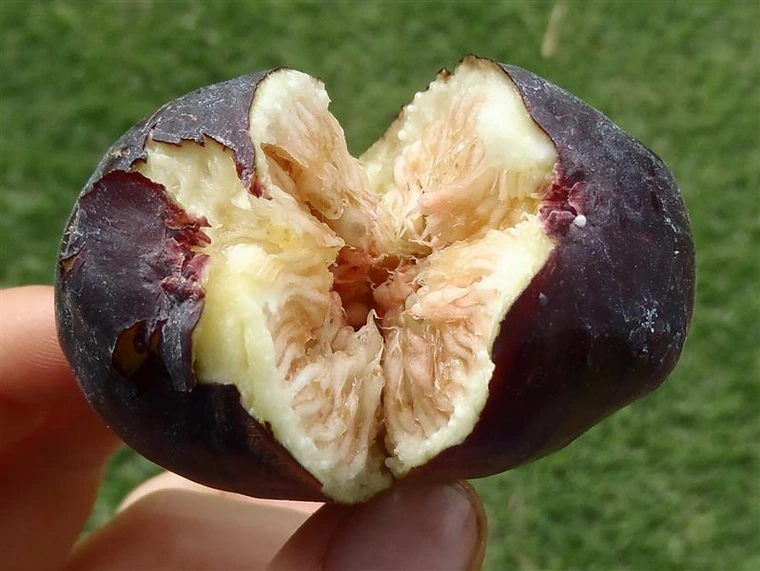
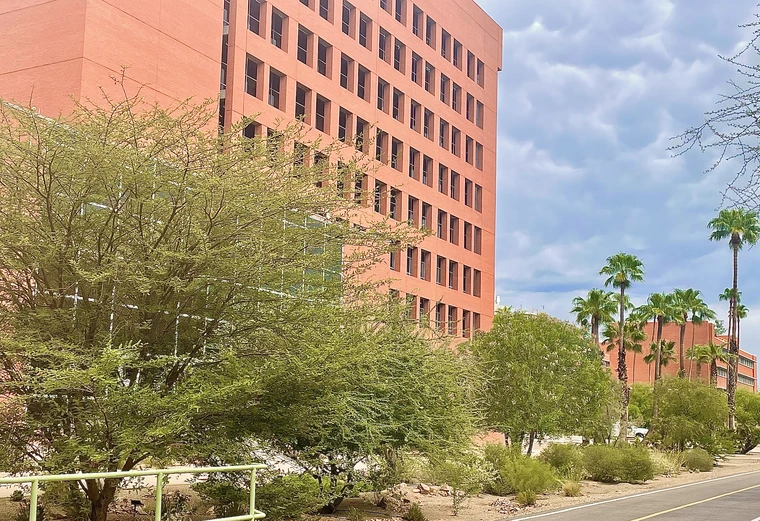
In 2022, the Campus Arboretum built the Resilience Garden to further develop the landscape around top-performing, large trees rescued from another site in 2021. The ability of those trees to survive the three month process of digging out, boxing, shipping and replanting inspired the concept of dedicating their new home as a model of resilience. The garden, is now full of plants that are rooted now in one place for the rest of their lives. Because they are rooted in place, they must adapt and learn how to thrive as change happens around them - through drought, rain, freezing, flooding and extreme heat, they employ many clever strategies that allow them to endure and to thrive.
The story of these trees models for us a path toward our own resilience. If you look around the garden, you might notice small red plaques inscribed with messages that inspire reflection and teach us about the ways trees find the strength to adapt and thrive in all conditions. The arboretum’s mission is to help us see and appreciate the plants around us. This garden invites you to pause, take a moment to appreciate the trees' resilience and find some of that resilience within ourselves.

The trees on this site, spurred the return of life to the area that was previously a dirt parking lot. The arrival of the rescued trees, brought a series of other improvements and opportunities – the completion of the missing piece of the Tucson community bike path, the introduction of new understory plants, the engagement by student groups who built water harvesting basins, and a new garden tour, as well as water harvesting basin performance testing by a faculty in the School of Natural Resources. These trees did more than just get rescued… they maintained a position of generosity, inspiring the community to come together and create something functional, educational and useful out of difficult and problematic circumstances.
DIRECTIONS TO NEXT STOP: Walk north to the south side of South Hall.
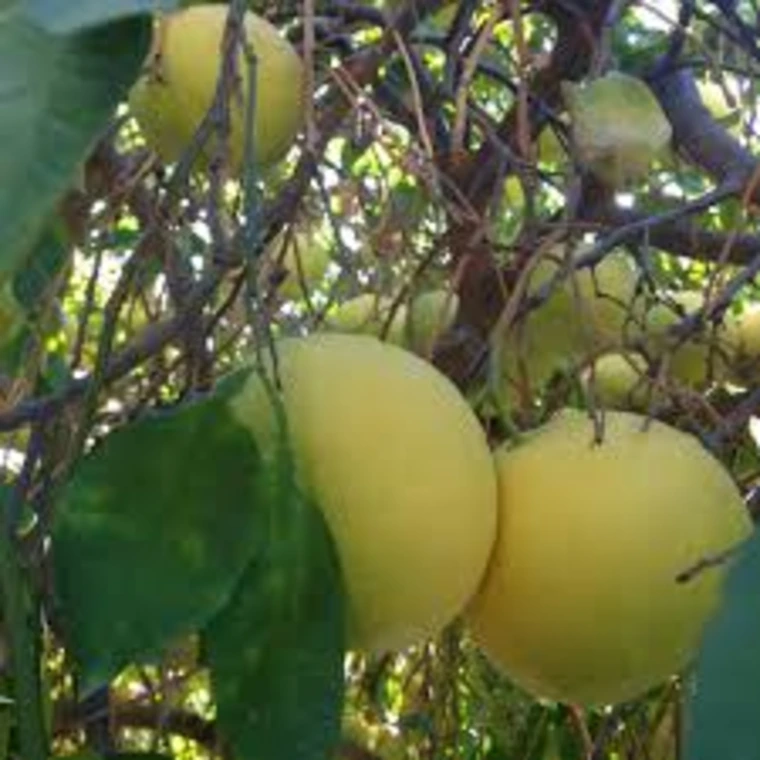
Citrus trees were among the first plant species studied on campus to determine whether it could be grown in Arizona. The research confirmed citrus could be grown in the state and a major industry was developed. Though citrus trees do require more water than other native plants, they reward us with so much back. Citrus trees provide us with sweet fruit with high water content. In an arid desert environment, juicy fruit supports good hydration. Additionally, it is nutritious, rich in vitamins, fiber, and high in flavonoids, which confer anti-inflammatory protection when consumed.
Besides the fruit, what else do these trees give us? Stop for a moment, look around at Cochise Hall, and think about how much different this building would be without its citrus trees. These trees draw a crowd! From their big, beautiful dark green canopies, dense shade, juicy fruit and fragrant flowers – these trees offer us so much! My favorite aspect of citrus trees are their incredibly aromatic flowers and zesty smelling fruit. Ultimately, these trees provide food, an invitation to gather, shade and shelter from the sun, and uplifting smells.
DIRECTIONS TO NEXT STOP: Walk north toward the Haury Building.
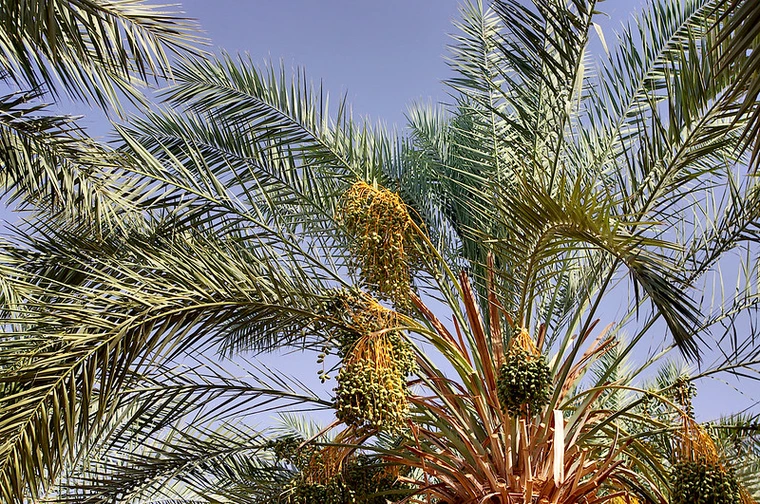
Jan Hellebrant Flickr.com
Towering over us is the date palm. The first date palms brought to the campus by Prof. Robert Forbes who tested them on campus to determine if they might be suitable agricultural crops for Arizona. Later, in 1955 a special date palm was gifted to Dr. Phillip Eckert, then dean of the College of Agriculture in recognition of his role in establishing a college of agriculture in Iraq. That special tree is a UA Heritage tree and it is located on the NE corner of Old Main. These specific date palms don't have a story quite as interesting, but as a species they are fascinating. They can grow up to 80 feet tall with sprawling feather-shaped leaves. They can live up to 200 years old and are a keystone species throughout the Middle East and North Africa.
These behemoths fruit only once a year, but they are not stingy with the fruit they produce. One single harvest can produce up to 200 - 300 lbs of dates, that's around 10,000 dates off of one tree. What makes this all the more generous is that dates are a superfood. They are incredibly high in sugar and calories and have plenty of fiber, nutrients, and antioxidants. In a climate like the Middle East, which can be extraordinarily barren and dry, a tree like this, when fruiting, can be a lifesaver.
What sets these trees apart from others is their role in carbon dioxide recycling. Date palms are astounding carbon sponges, holding more carbon dioxide than other trees of a similar size. To those of you who know that the density of the palm wood is much lower than most other true trees, this fact might surprise you. Where, then, does all the carbon dioxide get absorbed? That carbon goes into the dense canopy and adds to even desert root systems of the plant, and because of the palm's long lifespans, that carbon isn't going anywhere for a long, long time.
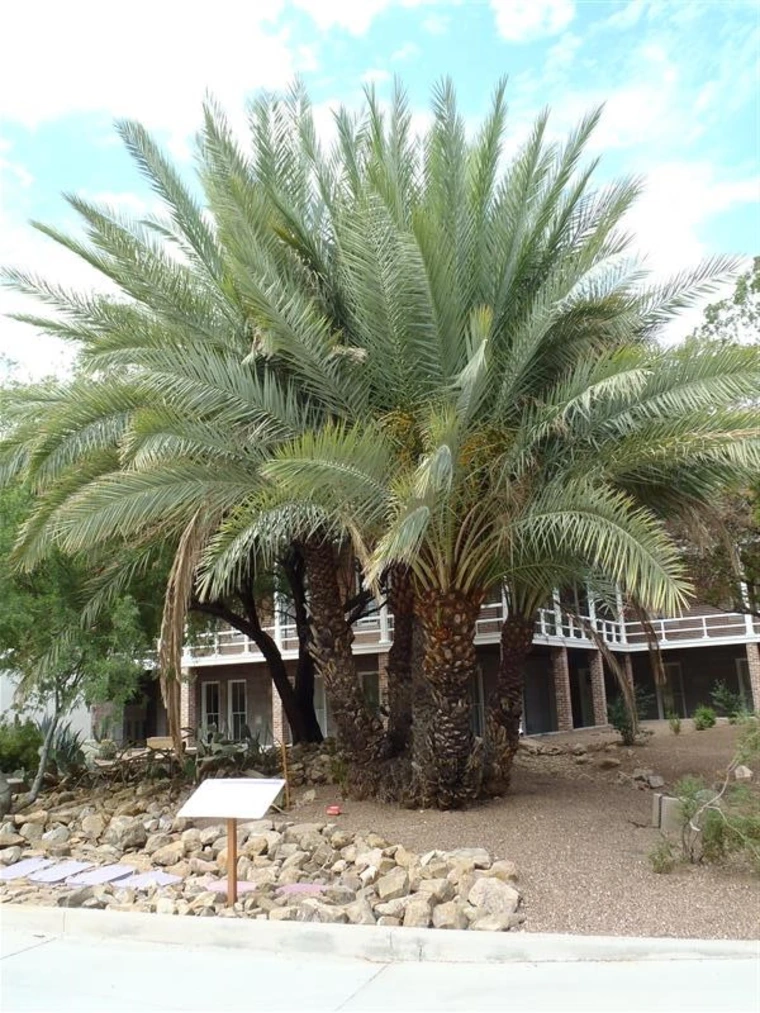
Not only do these plants give us shade, structure, and fruit, but they also spend all day cleaning our atmosphere – so industrious and helpful!
DIRECTIONS TO NEXT STOP: Walk north along Olive Walk/Park Ave.
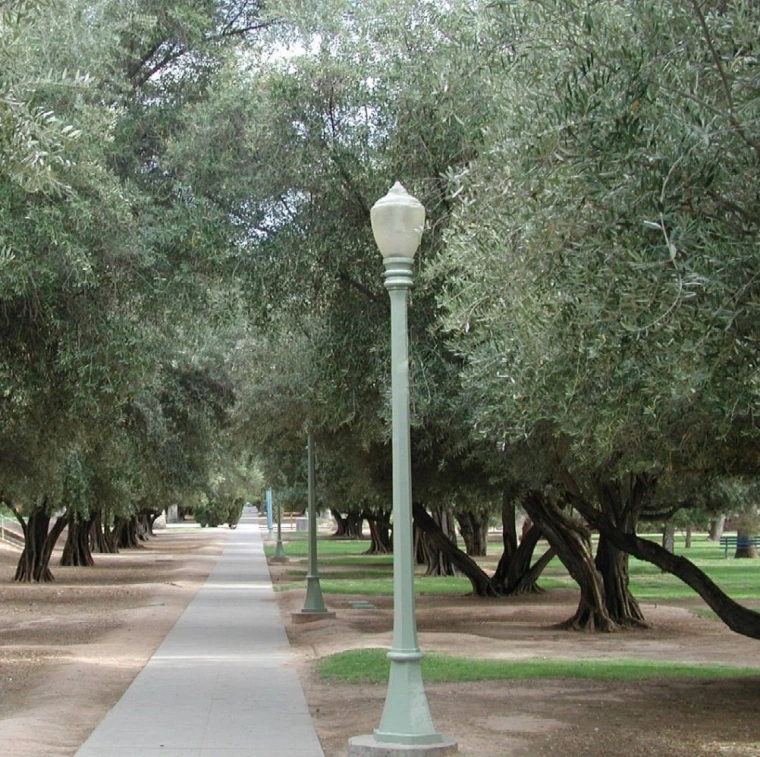
The Campus Arboretum evolved into a world class botanical collection as a result of more than a century of research focused on selecting and testing woody plants from around the world for adaptation to desert climates. Citrus, dates and olive trees tested on campus became major industries in Arizona and hundreds of arid adapted landscape ornamental trees and shrubs tested here now populate, protect and beautify urban landscapes throughout the American southwest. In the 21st century, the Campus Arboretum perpetuates this legacy recognizing the heightened need for trees in desert cities facing increased challenges due to population, urbanization and climate change.
The last tree I want to introduce to you all is the Olive tree. You will see these trees everywhere on campus and around town. They were first brought here in 1895 by Robert Forbes to see how well they would perform in our climate. Forbes brought a few cultivars, different varieties of the same species, and since then, they have been planted throughout the desert southwest. These trees did incredibly well not only in their role as a crop plant, but additionally as a landscape ornament. The olive is a reliable tree that doesn't require many inputs to survive.
While olive trees don't produce fruit that we can readily eat, like the fig and citrus trees do, and it won't absorb carbon dioxide as fast as date palms do, but there are many other ways this tree is generous. You may notice, for example, that the tree’s leaves are grey, its bark gnarled and patterned, and its form twisting and sculptural. These features are clues that the trees are old! The longevity of these trees ensure that achieve a large size and a greater capacity to serve (think shade, fruit, and all the other benefits trees provide). Further, it inspires me - it seems wise, and has no need to be flashy. It simply employs all its evolutionary creativity to survive and it will. Olive trees typically live to be up to 600 years old, more than any other tree we mentioned here besides the baobab, (which is ancient and long lived). The trees we see here were planted in 1892 (>130 years old). Right now, these trees sit quietly, rooted in place where for more than a century, providing many benefits for people and the planet. In 80 years, the citrus trees we've seen will have fallen, but the olives will still be here, providing us shade under their canopies. In 100 years, most of the date palms will have passed, but the olive tree will still be standing, reducing soil erosion and sequestering carbon dioxide. In 200 years, the figs on campus will no longer be here, but the olive tree will still be here providing fruit and oil to feed our population. And in 500 years, everyone you know, have known, or will know, will be gone. The world as you know it will be completely unrecognizable to you, but the olive tree will be here, unwavering and modest, shading and looking after many future generations of UA wildcats and Tucsonans who pass this way.
This concludes the generositree tour. We hope you have had a nice experience connecting with the campus landscapes and that you feel enriched with greater appreciation for the many ways plants (but especially trees) support you.
This tour was created as part of an arboretum internship in Spring 2025 by undergraduate student Aboud Zahlan, who was pursuing a B.S. in Sustainable Plant Systems (Urban Horticulture Emphasis), College of Agriculture, Life and Environmental Sciences.
University of Arizona Class of 2026.


